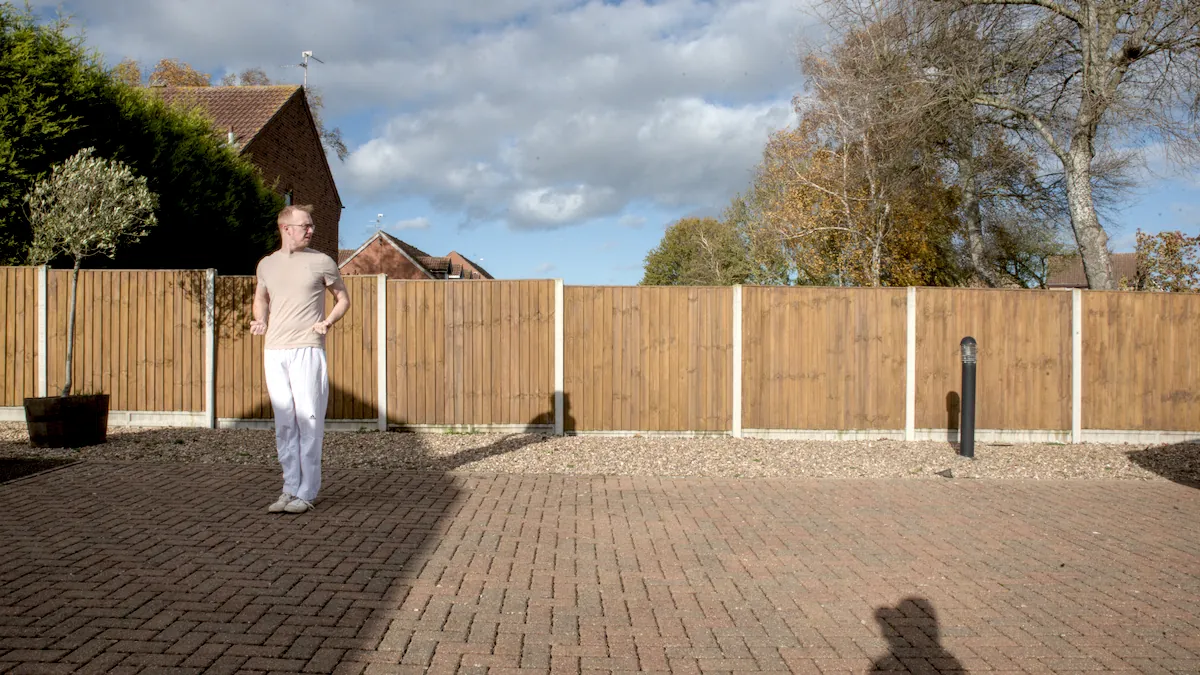Not all martial arts were created equal. Thanks to how accessible martial arts are now, to travel and to modern-day MMA, it’s become clear which martial arts work and which don’t. So, if you’re thinking of starting a new martial, you must know which to avoid – these are the worst martial arts for self-defense.
Of course, there are always exceptions to the rules, but after over 30 years of experience training, teaching, and competing in martial arts, these are the worst martial arts styles I’ve found.
The Worst Martial Art Is the One You Don’t Train
The worst martial art for self-defense will always be the one you don’t train. Learning BJJ? But only go once a month and spend most of the time chatting with your rolling partner instead of doing drills? Then, that’s the worst martial art for you.
This study from the UK cites a large survey where martial artists on average reported attended 6 times per month, that’s less than twice a week!
You will only become a skilled fighter equipped with self-defense skills if you train hard and often. That means attending class at least twice a week (preferably more) and finding time to practice at home, too.
Another worst martial art for defending yourself is the one you don’t spar with. Are you learning praying mantis kung fu? You’ve learned the form and even made a pretty good impression of a praying mantis, but you never have a praying mantis sparring session? How do you expect to be competent in a fight if you don’t practice fighting?
Bruce Lee said it best, “The best way to learn to fight, is to fight.” Even if that means learning martial arts at home, or adding sparring sessions outside of class.
With that being said, there are some martial arts that you’ll always be at a disadvantage no matter how much you train. You should do these martial arts if you love them, but when defending yourself from an attacker in the street, you better have also learned one of the best martial arts for self-defense.
Aikido: The Worst Martial Art?
Aikido, or the “way of unifying forces,” is a modern Japanese martial art developed in the 1920s by Morihei Ueshiba. Ueshiba, a skilled martial artist in his own right, developed Aikido to align with his philosophical ideas rather than the best fighting strategies and techniques.
It was his philosophy of nonviolence that gave Aikido its unique style. Ueshiba’s goal was to create a martial art capable of defending oneself from attack while not injuring the attacker.
Joint locks and throws are the primary methods used in Aikido. It’s this reliance on these attacks that gives Aikido its biggest problem. In practice, students or practice partners tend to “go with the throw.” Usually, this starts because it reduces joint stress when continuously twisted. Rather than waiting for the pressure on the joint to force you to be thrown, you throw yourself.
The person practicing then never has to practice the technique correctly, and the longer you train, the worse the problem gets. This is why you often see old Aikido masters throwing students around by barely touching them. Of course, if they met anyone in the ring or on the street who had never trained in Aikido, they would be immune from the master’s “skills.”
Ultimately, Aikido is a good idea that just doesn’t train correctly. If Aikido students frequently trained with non-participating partners and sparred with jiu-jitsu practitioners and other martial artists, they would quickly realize their weaknesses and work to overcome them.
Unfortunately, fighting without hurting anyone just isn’t going to work when you’re life is on the line.
Tai Chi: Not for Street Fighting
After 20+ years of learning tai chi, I can confidently say it is one of the worst martial arts for self-defense. Here are the main reasons:
- Most schools don’t teach applications
- Even fewer practice free sparing
- Push hands competitions don’t simulate fighting
- Too much time is spent practicing the form
I love tai chi. I moved to China and learned under Chen Yu, one of the greatest masters, and lineage holders alive today, but it doesn’t prepare you for a street fight. When you watch Chen ZiQiang throwing people around, you can see how tai chi could be effective, like wrestling is effective. But that isn’t how most people learn taichi.
If you walk into an average tai chi class in the West, it will likely be called something like “Tai Chi for Health and Meditation.” A calm, hippy-like guy will float over and ask you if you want to join the class, which will entail lots of slow breathing and walking around like you’re underwater.
After learning the form, he may tell you a little about “applications” or how to use the movements, but you’ll practice them all in slow motion. There will be no ring, gloves, or danger of getting hit.
When I finished class in Beijing, I’d be beetroot red, and my wrists would be covered in bruises.
Ultimately, spending a few hours a week simulating fighting will make you better at fighting. If you spend a few hours a week doing a tai chi form, you’ll get better at doing the form.
Taekwondo Black Belt Struggle in Fights
Anyone who has learned martial arts or been close to the fight game for any time will know the phrase, “crowd the kicker.” It’s where you get in close to someone who throws a lot of kicks.
Once you get close enough, kicks become useless.
That’s no problem if you know how to punch, clinch, or wrestle, but Taekwondo doesn’t teach these techniques.
In World Taekwondo, the style you see at the Olympics, no points are awarded for punching, and punches to the face are not allowed at all. This creates a fighter who only practices kicking, which is great if your opponent only kicks, too, but in the street, most people don’t know how to kick at all. They only throw hands.
I gained a black belt in Taekwondo before realizing this colossal problem. I quickly switched to a style of Chinese kickboxing to round out my standing game.
Kung Fu: Less Lethal Every Year
Again, I have trained in Kung Fu for over two decades and learned everything from praying mantis style to baiji quan and Shaolin. I’ve trained with masters all over the world, including Shaolin monks, champion fighters, and old men in parks.
Kung fu is a martial art, not a sport like Taekwondo, and it’s got the right focus, unlike tai chi. Why, then, is it one of the worst martial arts to learn for self-defense?
Most Kung Fu Styles Are Inefficient or Ineffective
I don’t care what anyone says; pretending to be a praying mantis, monkey, or drunk is not the best way a person should fight. Bruce Lee recognized this in the 1960s. He called it the “Classical mess” of Chinese martial arts.
In a time and place when most people were uneducated and malnourished, anyone with some training could defend themselves. It wouldn’t matter if they spent hours practicing fighting against imaginary opponents instead of real ones or if they didn’t lift weights or do cardio. Any amount of training would put them at an advantage.
But now the playing field is much more even. Fighting against a simple and efficient style, such as boxing, most kung fu styles cannot compete.
The Chinese fighters in the UFC don’t use kung fu, most learn a combination of kickboxing and Brazilian Jiu-Jitsu. You could say this ends the argument of Kung Fu vs Karate.
Even at the Shaolin Temple, arguably the most important place for martial arts development in China, students and monks spend most of their time practicing sanda (kickboxing) rather than traditional kung fu.
They’ve acknowledged that traditional kung fu isn’t practical in the 21st century and are making changes.
Kung Fu Schools Lack Sparring and Competition
Some kung fu styles, such as Hung Gar, have a strong history of sparring and competitions, but many styles rarely get tested inside the ring. I learned many kung fu styles, such as wing chun, mantis, and long fist, without ever having an actual sparring session. And competitions for those obscure styles don’t exist. The only way to do this is to put the gloves on and have a kickboxing or MMA fight.
Without sparring, you won’t get better at self-defense. You must put yourself in a real combat situation to develop those skills.
So, if you do learn kung fu, check for these two things:
- Does your kung fu school have regular sparring sessions and competitions?
- Do they fight in the ring like they train in class?
If the answer is yes to both of these questions, you’ve found a kung fu school that might work for defending yourself in the real world.
Culture Gets in the Way
Most kung fu schools, especially in the West, adopt a form of Chinese culture that doesn’t exist. They wear uniforms that I never saw in my 16 years in China. They bow when walking into their dojo (a Japanese word) and use Chinese words for things they can’t explain, such as Qi and Jin.
In these kung fu schools, the masters seldom compete and only show students moves if they cooperate. If a boxer walked into the school and challenged the master, they would simply be asked to leave.
How to Make Any Martial Art More Effective for Self Defense
Regardless of what style you learn, it’s not enough to just turn up to class and do what the teacher says. You might get your black belt this way eventually but to learn the skills you want in a street fight, there’s more you must be doing.
Here’s how to make even the worst martial art an effective method of self defense:
- Train Hard – If you’re never exhausted after training, you’re not training hard enough. An attacker won’t go easy on you.
- Train Everyday – Yes, everyday! Most martial artists train less than twice a week, but you improve four times as fast.
- Study – How many of the best martial arts books do you have on your shelf?
- Spar Often – You should never have a week go by when you haven’t had a sparring session. Friendly, low contact sparring sessions are the best way to prepare yourself for a fight.
- Test Your Skills – Occassionally you should get in the ring and fight. It might be semi-contact, or with lots of protective gear, but it should be competitive with someone you don’t know.






